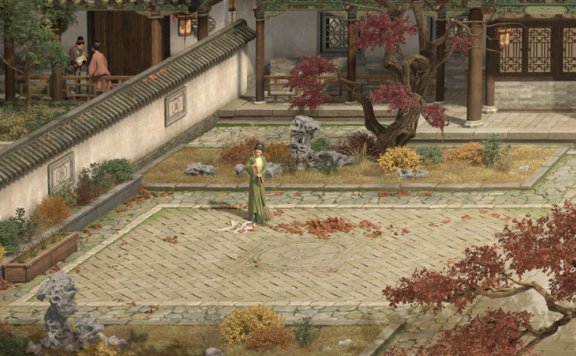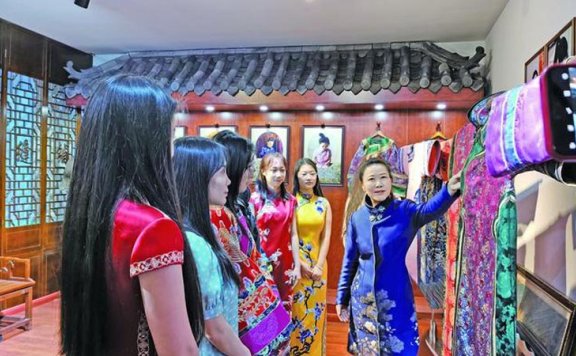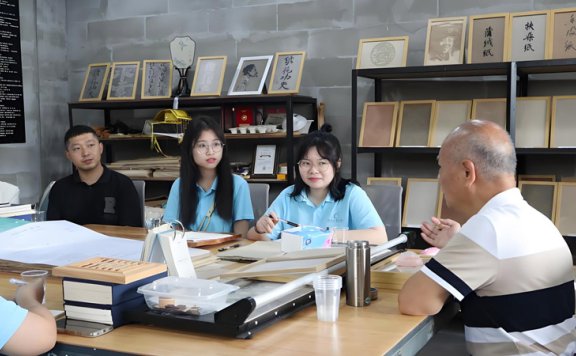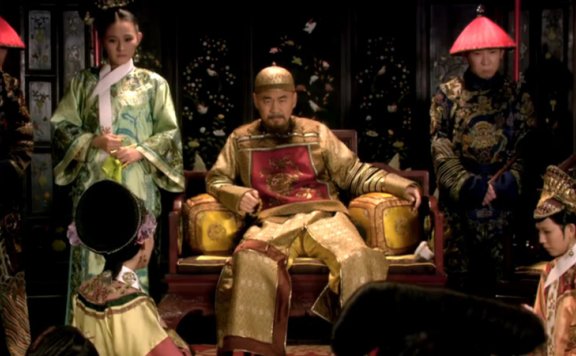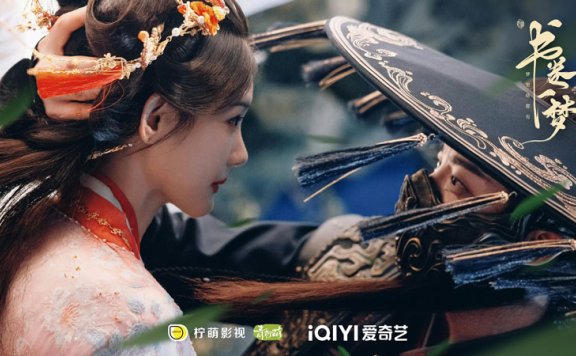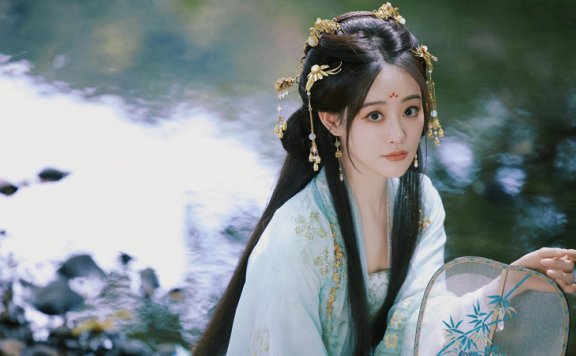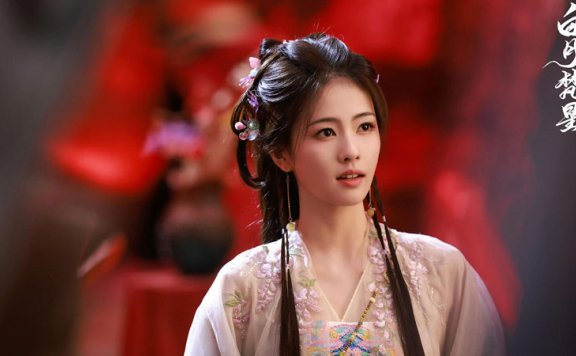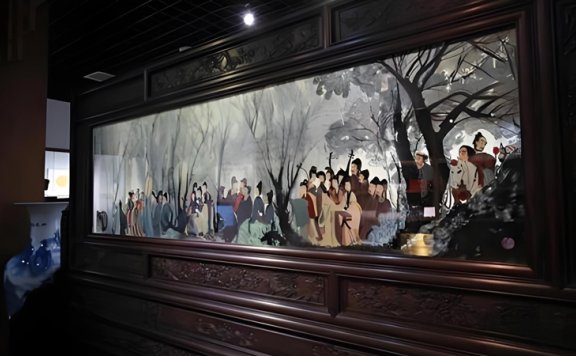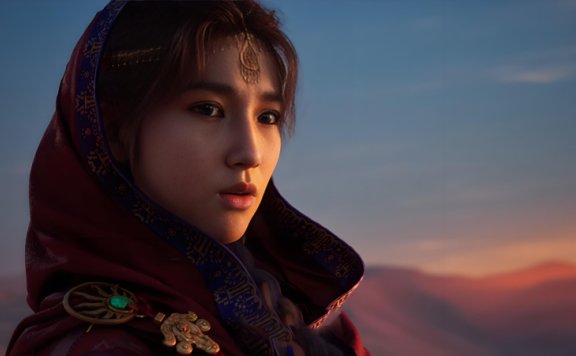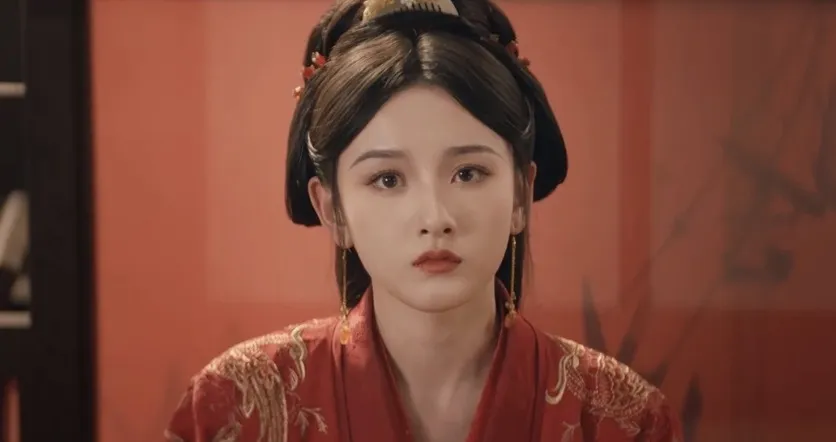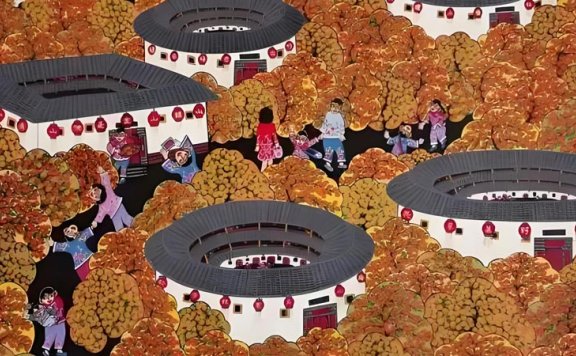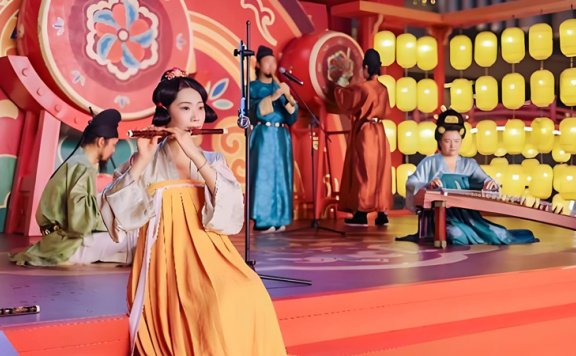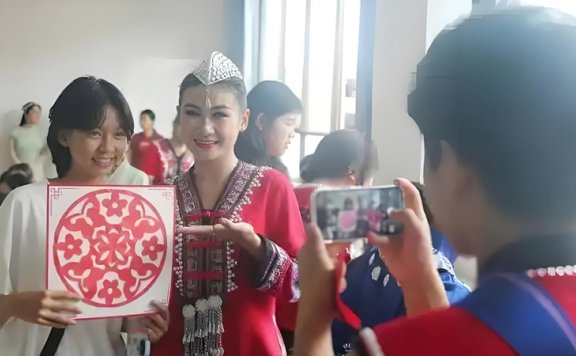Article
搜索结果:
-
Ne Zha 2 English Voiceover Debuts August 22 with Michelle Yeoh
The highly anticipated English-dubbed version of Ne Zha 2 (哪吒2): The Devil Comes is set to premiere across North America and Australasia on August 22, 2025, marking a strategic expansion for this record-breaking Chinese animation. Oscar-winning actress Michelle Yeoh has joined the cast, lending her voice to an undisclosed role, as revealed by production partners China Lion Film and A24. This release aims to captivate audiences in the United States, Canada, Australia, and New Zealand with premium formats like IMAX and 3D, addressing cultural preferences for dubbed films over subtitles. Following its monumental success in China, where it grossed over $22 billion globally and dominated box office charts, this new iteration promises to amplify the film's universal themes of resilience and heritage for English-speaking viewers. Record-Setting Achievements The original Chinese release of Ne Zha 2 captivated audiences for an extended 153-day run starting January 29, 2025, becoming a cultural phenomenon with unprecedented milestones. It shattered 113 records and earned 308 accolades, cementing its status as China's all-time highest-grossing film and the global animation leader. Global earnings surpassed $22 billion, placing it among the top five highest-grossing movies in history, a testament to its widespread appeal and storytelling power. In North… -
Curious Tales of a Temple: Showcasing the Artistic Charm of Chinese Animation
The animated anthology Curious Tales of a Temple (聊斋:兰若寺) premiered July 12th, reimagining classical Chinese literature through groundbreaking visual storytelling. Produced by Light Chaser Animation across four years, the 152-minute film interconnects five tales from Pu Songling’s (蒲松龄) 18th-century Strange Tales from a Lonely Studio (聊斋志异) with an original narrative thread. 6 directors crafted distinct artistic visions for each segment, creating a cohesive exploration of human desires and spiritual resilience. Opening day box office surpassed $2.2 million, signaling strong audience resonance with its innovative fusion of heritage and contemporary animation techniques. Emotional Journeys Through Folklore The anthology examines universal truths through supernatural parables. Taoist of the Mountain Lao (崂山道士) exposes greed’s consequences using tactile felt-textured animation, where heavy wool rendering symbolizes moral weight. The Lotus Princess (莲花公主) transforms a tragic romance into a child’s dreamscape adventure, celebrating innocence with floating petals and luminescent insects. Director Xie Junwei (谢君伟) describes this segment as "a bridge between adult nostalgia and children’s wonder," blending whimsy with emotional authenticity. Nie Xiaoqian (聂小倩) amplifies the original ghost story’s tension by setting it against wartime chaos, intensifying the bond between scholar Ning Caichen (宁采臣) and the spirit Nie Xiaoqian. Director Zou Jing (邹靖) explains the adaptation… -
6 Years Later, Drama Icons Rewrite Destiny Through Flourished Peony
When Yang Zi and Li Xian reunited on screen in Flourished Peony (锦绣芳华), they reignited a flame first kindled in 2019’s Go Go Squid! (亲爱的,热爱的). This deliberate revival of chemistry—spanning modern romance to Tang Dynasty intrigue—transcended mere nostalgia, evolving into a masterclass in IP longevity. Nostalgia Crafted Frame by Frame The 2025 drama meticulously resurrected signature moments from its predecessor. The "shoulder-burrowing embrace," iconic in Go Go Squid!, reappeared in Flourished Peony as a tactile bridge across six years. During promotional livestreams, Yang Zi’s playful jab at "industrial sugar" tropes and Li Xian’s cherry-feeding gesture became viral lore. Fans crowned them "Pure Fate CP," celebrating improvised hand dances and red-string embraces that mirrored their characters’ enduring bond. On July 9, 2025—exactly six years after Go Go Squid! premiered—both series’ official accounts staged a coordinated "One Life, One World" social media exchange. A montage intertwining the couples’ journeys framed it as karmic destiny, flooding platforms with hashtags like "#19SummerWindBlowsTo25." Viewers binge-watched Flourished Peony as tribute, declaring it "the ultimate gift" for loyal followers. Characters Reborn, Themes Elevated Yang Zi’s transformation from sweet-genius computer whiz Tang Nian (佟年) to resourceful entrepreneur He Weifang (何惟芳) showcased narrative ambition. Li Xian’s shift from esports… -
Xiangyunsha: New Chinese Fabric in Stitches
The quiet revolution in fashion isn't loud—it flows. Across bustling cities and serene landscapes, a refined aesthetic emerges: garments honoring heritage while embracing contemporary life. This movement transcends fleeting trends, weaving cultural threads into daily elegance. At its heart lies craftsmanship, where ancient techniques meet modern silhouettes. The Xiangyunsha (香云纱) embroidery set exemplifies this philosophy—unassuming luxury that speaks through texture, drape, and meticulous detail. The Fabric of Time Xiangyunsha isn’t merely silk; it’s alchemy. For centuries, artisans sun-dyed this fabric over 20 times, coaxing crackled patterns resembling aged porcelain. These "turtle wrinkles" aren’t flaws but narratives—each fissure a testament to patience. Unlike synthetics, Xiangyunsha breathes. Its porous structure wicks moisture, offering coolness in summer’s grip. With wear, magic unfolds. The fabric deepens in luster, developing an oil-like sheen that glows softly. This organic evolution makes every garment unique—a living heirloom. The black base in this set serves as a canvas, where light dances across subtle ridges, revealing hidden dimensions. Traditional dyeing uses mineral-rich river mud and plant extracts, yielding hues that harmonize with nature. Modern wearers inherit this legacy: cloth carrying earth’s poetry. Its weight feels substantial yet airy—structure without stiffness. Stitches of Sunlight Hand embroidery transforms fabric into art.… -
Jia Shujuan: The Design Beauty of Manchu Qipao
Beneath the cool summer skies of Mudanjiang, Heilongjiang, a living tapestry of tradition unfolds each evening. Dozens of models from Tang Man Culture Company grace parks and plazas, their Manchu qipaos—with sculpted collars, coiled buttons, and artful slits—blending ancestral grace with modern silhouettes. Led by Jia Shujuan (贾淑娟), a provincial intangible heritage inheritor, this daily procession embodies a cultural renaissance where every stitch narrates millennia of Manchu wisdom. Craftsmanship Reimagined Jia’s studio produces over a thousand unique qipaos annually, each a canvas of innovation. Regional motifs merge with ink-wash paintings and botanical dyes, transforming silk into storytelling mediums. The garments honor Qing Dynasty techniques likepan jin(coiling gold) embroidery, while contemporary cuts accentuate natural forms. Seasonal inspirations yield breakthroughs like the Ice-Snow Qipao. Jagged hems mimic glacial formations, while hidden snowflake cutouts along slits create "moving snowfall" illusions under light. This dialogue between environment and craft reflects Jia’s philosophy: "Technology is the bone, culture the soul, nature the muse." Nature’s Silent Language Heilongjiang’s wilderness breathes within every design. Wild tussah silk, harvested locally, provides the foundation. Artisans hand-paint patterns using roots, berries, and leaves—forest hues whispering through fabric. Peonies bloom across bodices, cranes soar on sleeves, each element distilling Northeast China’s… -
4-Year Legacy: Students Reawakening Liuxi Paper with Digital Innovation
For four consecutive years, Guangdong Light Industry Polytechnic University students have journeyed to Lianma Village in Conghua. Their mission: resurrecting Liuxi paper, a near-lost craft where bamboo transforms into delicate sheets. Villagers greet them warmly, noting how these young innovators consistently bring fresh energy to the ancient settlement. Since 2022, the "Treasure Hunt Lianma" student team has woven academic rigor with cultural reverence, creating a sustainable bridge between campus and community. Their evolving strategy—from technical restoration to creative reimagination—demonstrates how youthful vision can transform heritage into living, breathing contemporary practice. Roots in Collaboration A formal partnership between the university's Materials School and Lianma Village established continuity. This framework enabled 17 professors and 28 technicians to provide ongoing support, moving beyond sporadic visits to embedded cooperation. Students adopted a "holiday immersion + routine assistance" model, ensuring consistent presence rather than fleeting involvement. During recent discussions, Professor Xie Guowei emphasized this sustained engagement as fundamental to their progress, allowing deep understanding of both the craft's intricacies and the village's needs. Their collaboration birthed unique educational initiatives. "Red Culture+" experiential tours now guide visitors through local revolutionary history using digital platforms, while integrating Liuxi paper motifs into thematic learning about integrity. Lotus and… -
Why Chinese Dramas Can Never Seem to Get Emperors Right
From the moment Qin Shi Huang declared himself the first emperor in 221 BCE to the abdication of Puyi in 1912, China had more than two millennia of imperial history. Yet strangely enough, it wasn't until much later that Chinese audiences began seeing emperors on their screens. Before the 1980s, non-realist genres were few and far between on Chinese television—let alone any depictions of emperors. When Emperors Finally Entered the Frame According to media scholars, the earliest TV portrayals of emperors date back to 1982. That year, Shanxi TV produced Anecdotes of the Tianbao Era (天宝轶事), Shanghai TV aired Prince Qin Li Shimin (秦王李世民), and Hebei TV released Consort Yi (懿贵妃). All of these shows predate Nurhaci (努尔哈赤), a better-known 1986 drama by China Central Television (CCTV), which is often mistakenly believed to be the first of its kind on the mainland. On-screen emperors in Chinese TV dramas generally fall into two categories: the "official history" type and the "unofficial tales" type. Nurhaci is an example of the former. Directed by Chen Jialin—later crowned "the first director of Chinese historical drama"—the show laid out a grand, epic style that would set the tone for later historical blockbusters like Tang Minghuang,… -
When The Feud and A Dream Within A Dream Try Short-Form Tricks
Following the success of The Double (墨雨云间), Yu Zheng's heavily promoted The Feud (临江仙) has ignited the summer fantasy romance market. Riding on the momentum of Wonderland of Love, Huanyu TV seems to have found a new formula—recasting long dramas in the mold of short-form content. The strategy: emotional punch over plot depth, and a binge-friendly pace over traditional slow burn. An "immortal romance" centered on a so-called "marital war," The Feud drew both praise and backlash, yet undeniable buzz. Its iQiyi popularity index climbed past 9500, though whether it can break 10,000 remains to be seen. Written by Zhao Na and Ren Yanan, directed by Zhi Lei and Guo Hao, and starring Bai Lu, Zeng Shunxi, He Ruixian, and Chen Xinhai, the drama tells the twisted tale of Hua Ruyue (Bai Lu) and Bai Jiusi (Zeng Shunxi)—immortal sovereigns doomed to love, hate, and marry/divorce three times across realms. Promotion was intense. Within a day of airing, the show's index surpassed 9300, peaking at 9514 by day three. Yet buzz began to slow. Nonetheless, 1873 trending topics—152 on Weibo's Hot Search, 637 on the Hot Rising list, and 305 on the Entertainment list—kept attention strong. Yunhedata confirmed a 12% market… -
My Three Years Animating A Record of a Mortal's Journey to Immortality
"Han Li is a protagonist utterly resolute in his pursuit of the Dao." This simple assessment, spoken by Lin Yu'ang, director of Seasons 3 and 4 of the animated series A Record of a Mortal's Journey to Immortality (凡人修仙传), during a live stream with Bilibili creator, reveals his deep understanding of the character. Having evolved from a devoted fan of the original novel to its adaptor, Lin knows Han Li's "Dao heart" is far from an empty concept. It's rooted in his childhood longing for the wider world beyond his mountain village. It's his desperate clutch at the lifeline offered upon discovering his spiritual roots—a chance to alter his destiny. It's the hard-won realization that stopping his journey means only one end: utter annihilation. "On the immortal cultivation path," Lin notes, "a single misstep leads to ruin, to complete destruction." From the sprawling 7.7-million-word source material, Lin sees Han Li's journey at its core as a "chronicle of solitary cultivation." Han Li must train diligently in obscurity to advance his power. He must hide his strength and tread carefully against formidable foes to snatch any chance of survival. And when acquiring rare treasures, extreme discretion is paramount to avoid covetous… -
Li Yitong's Bold Performance in A Dream Within A Dream
The summer drama season of 2025 is in full swing, and Li Yitong's (李一桐) latest series A Dream Within A Dream (书卷一梦) is generating serious buzz. Despite lacking the support of a big-name IP, this historical fantasy comedy has carved out its place in a crowded market with a gutsy, genre-bending premise—and a lead character who refuses to follow the script, quite literally. At the heart of this surge is Li Yitong's standout performance as Song Yimeng. According to multiple tracking platforms, Li's meticulous interpretation of the character has significantly boosted the show's reach. Her understated yet precise acting style allows the character—a fictional "paper doll" given life—to leap off the page. It's a compelling, layered portrayal that has become a new career milestone for the actress. A Character Who Fights Back A Dream Within A Dream is an original series that had already gained traction before its premiere, with over 3 million users signing up to watch on both iQIYI and Weibo. Once it aired, the show's unusual blend of genre self-awareness and quirky charm quickly caught fire. Within a day, it passed a heat index score of 2 on Datawin, a key metric in Chinese TV ratings. As… -
Can Bilibili's Period Dramas Outshine the Streaming Giants?
"Chastity? Purity? These are empty shackles... I stand whole and unbroken. That suffocating morality you worship? Keep it to yourselves." This fierce declaration from Bilibili's new period drama, Qingchuan's Veil of Vengeance (青川入梦), perfectly captures its modern feminist core. The story follows Mo Qingchuan, a female general framed for treason. After five years in captivity, she returns to the imperial court under the alias "Mo Wang" as a scholar, meticulously plotting her revenge. Following the success of 2023's An Ancient Love Song, Qingchuan's Veil of Vengeance arrives as another "compact gem"–just 18 episodes, each under 30 minutes. It blends "female-dominant relationships" and "taming narratives," proving that shorter mid-tier productions don't have to rely on cheap thrills. This drama marks Bilibili's continued push into the competitive period romance genre and a deeper exploration of focused, high-quality storytelling as the era of easy viewer growth fades. But zoom out: against giants like iQiyi, Tencent Video, Youku, and Mango TV pouring hundreds of millions into star-studded blockbusters, is Bilibili's "small but refined" approach naive idealism? Or could it actually shift the industry? The Power of "Small but Refined" Qingchuan's Veil of Vengeance isn't Bilibili's first compact hit. An Ancient Love Song (古相思曲) paved… -
Bai Lu's Triple Win: Acting Range, Commercial Clout, and Industry Influence
In today's fiercely competitive film and television landscape, only a rare few actors manage to level up across all fronts—critical acclaim, commercial value, and industry influence. Among the standout talents of the post-90s generation, Bai Lu has emerged as a model of multi-dimensional growth, propelled by the positive feedback loop between her on-screen performances and market response. As the summer 2025 season kicked off, Bai Lu's costume fantasy drama The Feud landed with impact. Not only did it shoot straight to the top of DeTavin's weekly rankings for historical dramas, but it also cemented her status as the only female lead on iQIYI's platform to headline two shows that surpassed the coveted 10,000 popularity index. What makes The Feud's success even more impressive is that it didn't rely on a big-name IP. Instead, it captured viewers with a tightly written original script and an unconventional, anti-cliché narrative. As the plot deepened, audience engagement soared—within just nine days of release, pop-up comment interactions exceeded 100 million, and the DeTavin buzz index peaked at 2.5, pushing the show past the 10,000 heat threshold. At the heart of this breakout was Bai Lu's portrayal of Li Qingyue (also known as Hua Ruyue). Her… -
Threads of Time: Ancient Embroidery Meets Modern Dolls
In a workshop in Jiangxi, Wu Wanjing (吴婉菁) places a piece of ramie fabric embroidered with blue-and-white porcelain patterns onto a LABUBU doll. This moment captures more than a craftsperson at work; it embodies a deliberate conversation between millennium-old heritage and global pop culture. Xiabu embroidery, rooted in the unique texture of handwoven ramie cloth (often called "China Grass"), thrives not through rigid preservation, but through dynamic reinvention. Once adorning baby bonnets and household items carrying familial blessings, its distinct "transparent stitching" technique, mimicking the flow of ink wash paintings, now finds unexpected canvases. Museums safeguard its history, while designers and students actively reinterpret its language for contemporary eyes and wardrobes, proving this resilient textile art is far from frozen in time. Fabric with Character Ramie cloth possesses an inherent, irregular texture formed by its handwoven warp and weft threads. Each piece is genuinely unique, bearing subtle variations from the artisan's touch. This distinctive surface posed a significant creative challenge: traditional dense embroidery methods would completely obscure the cloth's natural beauty and tactile quality. Preservation demanded innovation. The solution emerged in the form of the "transparent void stitch," a technique specifically developed for Xiabu embroidery. This method allows silk threads… -
Seoul Eases Access: China Group Tours Get Visa-Free Future
South Korea is poised to significantly boost its tourism sector by potentially extending visa-free entry for Chinese group visitors indefinitely. This strategic move, currently under final review by government ministries including Justice and Culture, aims to accelerate economic recovery by targeting the crucial Chinese market. Building on a planned short-term trial starting late 2025, the policy could become permanent from 2026 onwards, signaling a long-term commitment to welcoming Chinese travelers. Concurrently, authorities are exploring options to expand this benefit to individual tourists in the future, recognizing the substantial economic impact of Chinese visitation. Bilateral Tourism Surges Recent statistics highlight the strong rebound in travel between South Korea and China. During the first quarter of 2025 alone, 1.12 million Chinese tourists visited South Korea, constituting 28% of all international arrivals. This momentum builds on the 4.6 million Chinese visitors recorded in 2024, a significant jump from 2.02 million in 2023, though still below the 2019 peak. The reciprocal flow is equally robust, with 912,000 South Koreans traveling to China in the first four months of 2025, marking a 48.5% year-on-year increase. Demographic diversification is underway. Korean data shows retirees joining youth travelers to China, drawn by affordable high-speed rail passes and… -
Cultural Gifts: Ideas for Global Friends
Building genuine connections across cultures enriches our lives. When birthdays or holidays arrive, choosing the right gift for foreign friends becomes more than a gesture—it’s an opportunity to share your heritage while honoring theirs. Thoughtful presents spark joy, foster mutual understanding, and create lasting memories. This guide explores unique, culturally resonant gifts that transcend borders. Handcrafted Cultural Treasures Traditional crafts tell stories of heritage and artistry. Chinese embroidery, like Suzhou or Sichuan styles, showcases intricate techniques passed down for generations. Pieces featuring nature themes—birds, flowers, or pandas—capture attention with vivid detail. These works transform into elegant wall hangings or table displays, offering daily inspiration. One diplomat displayed Suzhou embroidery in her office, prompting colleagues to ask about its symbolism, turning the gift into a conversation starter. Yixing clay teapots represent another timeless choice. Crafted from porous purple clay, these teapots enhance tea flavors over time. Classic designs like the "Shi Piao" (stone dipper) balance form and function. For tea enthusiasts, gifting a small Yixing pot with premium oolong creates an interactive experience. A London-based chef uses his daily, noting how the ritual centers him—proof that utility and tradition coexist beautifully. Culinary Delights from the Region Regional flavors offer edible adventures.… -
Blood Message: A Tang Dynasty Saga Captivates Global Gamers
Against expectations, an audacious Chinese game set in the neglected late Tang Dynasty period has ignited international fervor. Blood Message (归唐), developed by NetEase’s Lin’an 24 Studio, defied industry skepticism about its niche historical backdrop. Its debut trailer soared past a million YouTube views, sparking fervent demands from players worldwide for localized versions in Spanish, Turkish, Arabic, and Portuguese. This surge highlights a potent convergence of meticulous historical recreation, cutting-edge technical execution, and resonant storytelling ambition, positioning Blood Message as a potential milestone for Chinese AAA development. Authenticity Fuels Fascination The game’s foundation lies in the tumultuous era following the An Lushan Rebellion, specifically focusing on the Guiyi Army’s desperate struggle to reclaim lost territories in the Hexi Corridor. Choosing this lesser-known chapter of Tang history was initially seen as commercial folly. However, Blood Message leverages this specificity to immerse players in a richly textured world. Authenticity permeates every visual element, from the intricate designs of Tang-era armor and weaponry to the stark, sweeping landscapes of the northwest frontier. Collaboration with Gansu Provincial Department of Culture and Tourism underscores this commitment. Developers utilized advanced scanning technology to digitally preserve real-world historical sites, artifacts, and geological formations. This data directly informs… -
Song Zuer's Iconic Curved Eyebrows
Song Zuer's eyebrows are truly iconic! In ancient - costume TV dramas, her Han - style makeup and styling as Xiao Qiao have once again won praise from netizens. Chinese classical eyebrow shapes are incredibly appealing! Let me first state that this kind of eyebrow shape is called a "curved eyebrow" in ancient times. It's one of the traditional eyebrow shapes that enjoyed the longest popularity in ancient China. The main features of the curved eyebrow are thick at the brow head and thin at the brow tail. The brow head gently rises to the brow peak and then smoothly falls. The boundary of the eyebrow shape is indistinct, and the color is like a stroke of ink, lighter at the brow head and darker at the brow tail, exuding a sense of fragility. Some netizens dug out Song Zuer's childhood look as Nezha, which also had thick curved eyebrows. They joked that even her eyebrows have grown proportionally! Now, about curved eyebrows, it's a general term. Any eyebrows with a curve can be called "curved eyebrows". Logically, the classic willow eyebrows in history are also a type of curved eyebrows. The willow eyebrows are thinner and longer than the… -
Vibrant Strokes: The Rebirth of Zhangping Folk Art
When the monumental folk painting Fujian’s Jubilant Song (3.23m × 2.51m) debuted at China’s inaugural Rural Art Exhibition, its crimson hues and dynamic scenes—from ancient Tulou buildings to lion dances—captured the essence of Fujian’s spirit. Created by seven artists from Zhangping, this work symbolizes the revival of a 400-year-old tradition nearly lost to urbanization. Wu Yuhuan (吴玉环), a master painter, describes the style: "Bold colors, whimsical figures, and auspicious themes that radiate sincerity." Once fading, Zhangping’s folk art now thrives through innovation and community effort. Roots in Resilience Zhangping’s painting legacy began in Xin’qiao Township during the Ming-Qing transition. Local artisans blended folk customs with daily life observations, developing a distinct aesthetic recognized as Fujian’s intangible cultural heritage. By the 1980s, "The Zhangping Phenomenon" emerged—a golden era where artists won national awards for works bursting with rural vitality. Yet by the 2000s, economic pressures drove painters toward commercial replica art. Chen Yongfeng (陈永凤), director of Zhangping Art Museum, recalls, "The exodus left villages silent. We feared the tradition would vanish." The 2010 founding of Zhangping Folk Painting Academy reversed this decline. Veteran artists like Wu Yuhuan and Liu Wenying (刘文英) led free workshops, attracting teachers, farmers, and artisans. Lan Yanping,… -
Tang Dynasty Elegance Ignites Beijing's Night Economy Renaissance
Shoukai LONG Street transformed into a portal to ancient China during its spectacular second anniversary celebration, held June 28-29, 2025. Partnering with the Changping District government and leveraging cinematic inspiration, the event, themed "Tang Dynasty Elegance," propelled the district's "Night Economy 3.0" initiative to unprecedented heights. Over two pulsating nights, the open-air complex drew a staggering 120,000 visitors – a 50% surge from the previous year – generating over ¥6 million in sales (up 28.5%) and amassing 120 million social media impressions. This wasn't merely a festival; it was a cultural and commercial phenomenon, establishing Shoukai LONG Street as the undisputed epicenter of Beijing's northern nightlife and setting a new benchmark for experiential retail. Reimagining History Stepping onto Shoukai LONG Street felt like entering a meticulously crafted Tang Dynasty dreamscape. Architects and designers masterfully utilized the venue's layered terraces and expansive walkways. They reconstructed iconic scenes from beloved historical dramas, transporting visitors along the legendary Empress Yang Guifei's litchi delivery route. Vibrant vermillion hues dominated, accented by intricate Tang brocade patterns adorning facades and installations, subtly echoing imperial aesthetics while infusing artistry into the urban fabric. The centerpiece was a sprawling, immersive recreation of a Tang market district, exceeding a… -
Pu'er and Laotian Youth Exchange Through Tea and Coffee Culture
The recent conclusion of the second "Study in Pu'er" program marked another successful chapter in cultural diplomacy between China and Laos. Over six immersive days, 44 young ethnic Chinese students and teachers from Laos explored Pu'er's unique identity where ancient tea traditions meet vibrant coffee culture. Hosted in Yunnan's southwestern city bordering Laos, Vietnam, and Myanmar, the initiative builds on last year's inaugural program. Participants engaged deeply with Chinese heritage while discovering shared roots along the historic Tea Horse Road. Their experiences—from hands-on tea processing to collaborative art projects—forged personal connections that transcend borders. As one student noted, the taste of Pu'er tea lingered far longer than the beverage itself, symbolizing the program's enduring impact on cross-cultural understanding and friendship. Cultural Immersion Experiences Pu'er's dual identity as a global tea source and China's coffee capital provided rich learning grounds. Students explored specialized workshops where they witnessed traditional Pu'er tea production techniques. Song Fanghu (宋方浒), whose family works in Laos' tea sector, discovered distinct processing methods enhancing the tea's fragrance and aftertaste. "The depth of flavor here is remarkable," he observed, planning to share these techniques back home. Parallel coffee workshops revealed surprising versatility. Song Yuping (宋雨平) marveled at cascara—coffee cherry…

